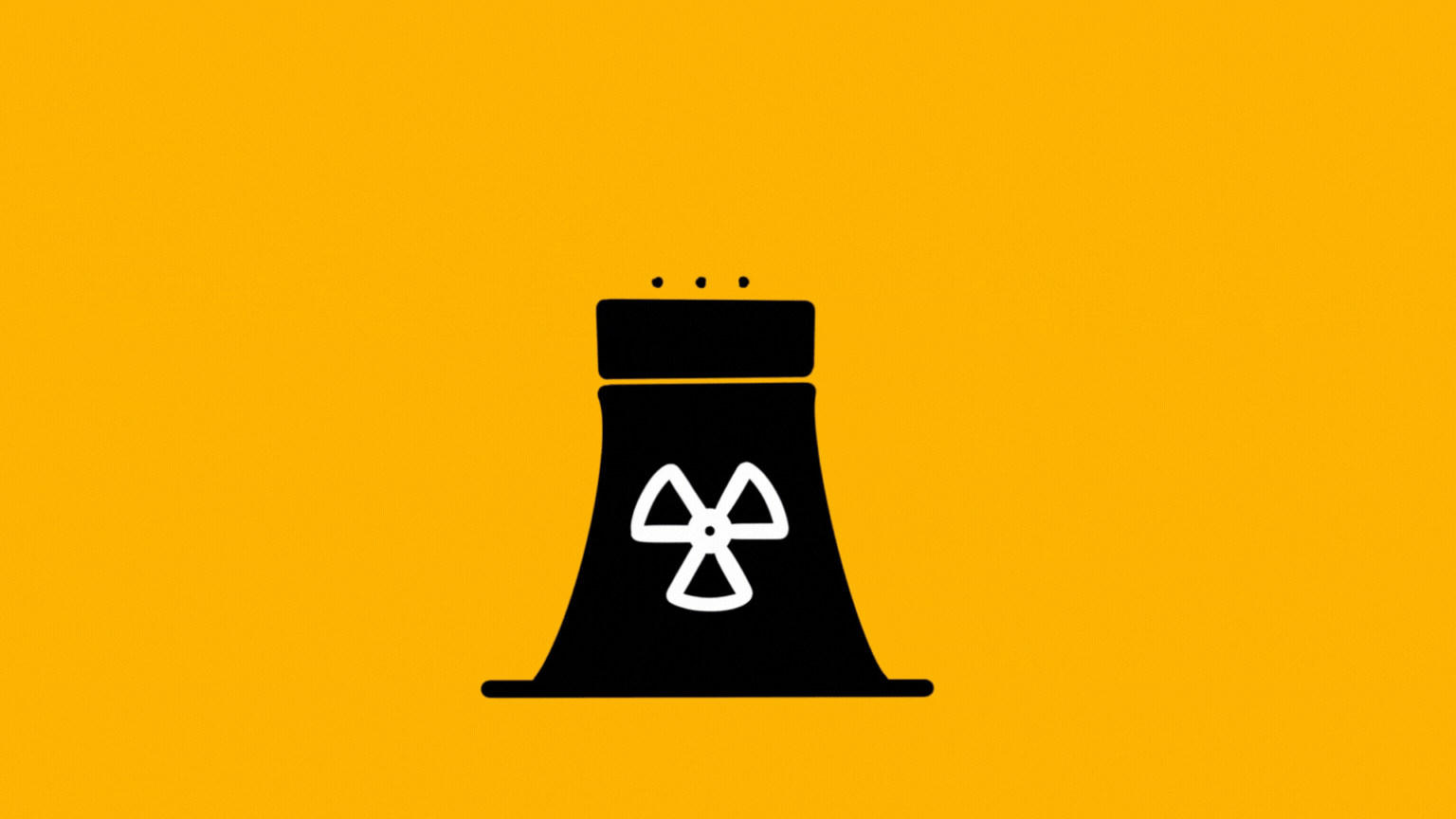Amazon and Google's next power move: Going nuclear
Tech giants are turning to nuclear power to supercharge their data centers — and the AI-driven future may depend on it.

Rana Tabbara
Senior Business Producer
Rana Tabbara is a UAE-based reporter and content creator known for dynamic storytelling, impactful reporting, and high-profile interviews. She interviewed leaders including the UAE Minister of Energy, the Australian Prime Minister, the Saudi Minister of Tourism, the Armenian Minister of Economy, and CEOs of major companies. Rana covered big events like the World Government Summit, LEAP, Cityscape KSA, IDEX, among others. Her previous experiences include The New York Times, CNN Business Arabic, and L'Orient-Le Jour.

With the energy demands of AI on the rise, Amazon and Google are betting on SMRs to power their data centers.
Canva
Amazon and Google have just made a power move — literally.
The tech giants are turning to nuclear energy to fuel their ever-growing data centers. That's right: nuclear power, not just for keeping cities running, but for powering your next AI-generated search or Netflix binge.
Picture this: massive data centers humming with activity, but instead of relying on conventional power sources or renewables like wind and solar, they’re tapping into clean, 24/7 nuclear energy.
Welcome to the future of tech infrastructure — powered by atoms.
The power of data (and AI)
We all know Amazon and Google are two of the world’s largest tech companies, but what’s less obvious is just how much energy their operations devour. Data centers are the invisible backbone of the internet, responsible for processing the billions of requests users make every day. Add to this the rise of artificial intelligence (AI) — which uses up to 10 times more energy than a standard Google search — and the energy demands start to skyrocket.
“The explosion of AI means the demand for data centers is going to surge," says Dr. Thomas W. O’Donnell, a nuclear physicist and world renowned expert in energy and international affairs. "These companies, particularly Amazon, Google, and Microsoft, are already energy-hungry giants, but with AI, we’re talking about a whole new level of consumption. And frankly, there’s no way renewable energy alone can meet these demands," he adds.
That’s why Amazon and Google are betting on nuclear power. Renewables like wind and solar, while essential in the global push toward sustainability, have their limitations. The sun doesn’t always shine, and the wind doesn’t always blow. But nuclear power? It’s constant. Whether it’s night or day, rain or shine, nuclear plants can run 24/7.
Enter small modular reactors

The real game-changer in this equation is small modular reactors (SMRs). Unlike the gigantic, traditional reactors of t, SMRs are more compact, cost-effective, and much safer. Companies like Kairos Power, a leader in SMR development, are partnering with tech giants to bring this technology to life.
“SMRs are perfect for tech companies,” says Dr. O’Donnell. “They provide the massive energy data centers need without relying on an unstable grid. Amazon and Google don’t want to deal with energy price swings or supply disruptions—they need something steady and predictable, and nuclear delivers. With an SMR right next to their data centers, they get uninterrupted power.”
Another bonus? SMRs use molten salt as a coolant instead of water, lowering the risk of meltdowns. Their smaller size means quicker builds, and being modular, they can be customized to fit various needs. Think of them as the LEGO blocks of nuclear power, building the future, one piece at a time.
Why nuclear over renewables?
You might wonder, with the global push for renewables, why Amazon and Google are eyeing nuclear energy. Dr. O'Donnell puts its bluntely: “Renewables are great, but they can’t do it all."
He goes on to say that wind power only runs at about 22–23% capacity on average, which means you’d need to install four times as much capacity to match nuclear power’s output. Not to mention, renewables require massive energy storage solutions for when the wind isn’t blowing or the sun isn’t shining, and battery technology simply isn’t there yet.”
Nuclear energy doesn’t have these problems. With a capacity factor of 92%, nuclear plants are incredibly efficient. They don’t need the kind of extensive storage renewables do, and they don’t require reimagining power grids to the same extent.
“It’s plug and play,” says O’Donnell. “You can replace a coal or gas plant with a nuclear one and use the same grid. It’s that simple.”
Is it safe?
For years, nuclear energy has been seen as controversial, with concerns about safety and waste. However, advancements in SMR technology, alongside increased pressure to combat climate change, are shifting public perception.
In fact, O'Donnell believes we’re seeing the start of a “nuclear renaissance” — a period where nuclear power becomes a central part of global energy strategies.
“What we’re witnessing is a significant shift,” he said. “Companies like Amazon and Google investing in nuclear are exactly what’s needed to accelerate the development of SMRs. It’s not just about tech — it’s about creating a sustainable, long-term solution for industries that rely on vast amounts of energy.”
As these SMRs roll out, the tech industry’s investment could act as a catalyst for the widespread adoption of nuclear energy. O'Donnell envisions a future where not just data centers, but industrial parks, communities, and entire regions are powered by modular reactors.
But like any major shift, the road won’t be without bumps.
Public skepticism around nuclear energy, lingering fears from accidents like Three Mile Island and Fukushima, and regulatory hurdles still pose challenges. However, O’Donnell is optimistic.
“The technology is there, and it’s safe. Nuclear energy has been powering parts of the world for over 70 years, and SMRs are the safest reactors ever designed. What we need now is public buy-in and policy support to make this nuclear renaissance a reality.”
The future is nuclear
Amazon and Google’s move into nuclear energy signals more than just a pivot in how they power their operations. It’s a glimpse into a future where tech and energy are intertwined in ways we never imagined. By investing in nuclear, these companies are positioning themselves as pioneers not just in digital technology but in sustainable energy solutions.
As O’Donnell said:
“Nuclear is the only way forward for tech companies that want to grow without compromising on sustainability. The future is nuclear, and Amazon, Google, and Microsoft are leading the charge.”







Comments
See what people are discussing